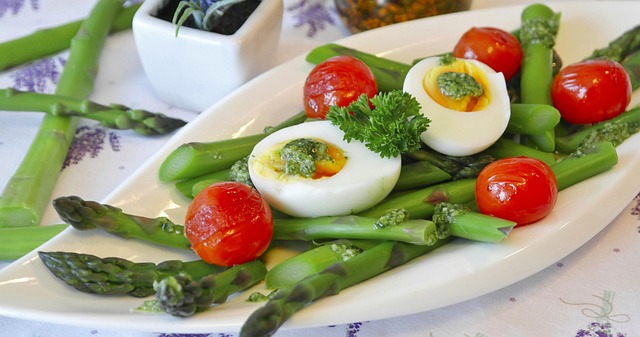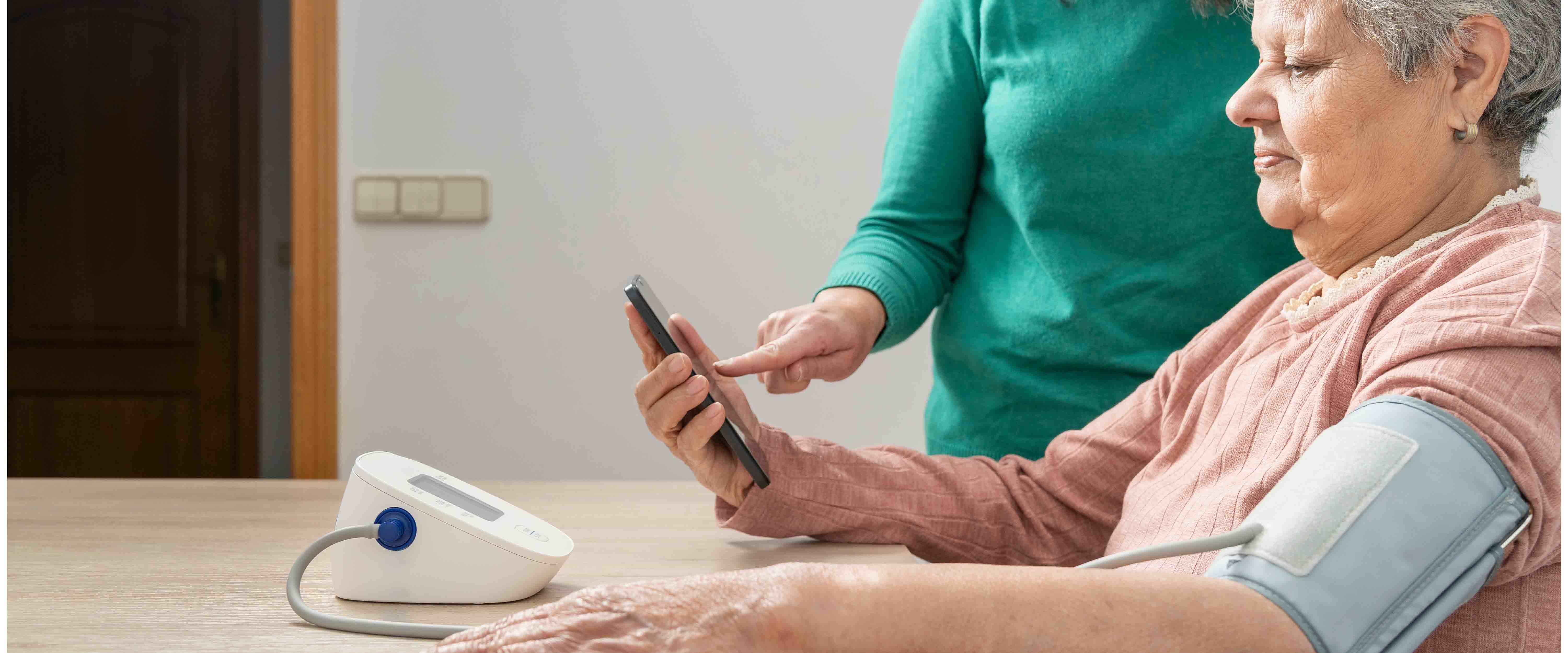Hypertension is one of the most common chronic conditions in the world and the United States. The Centers for Disease Control and Prevention (CDC) estimates that about 1 in 3, or 76 million, American adults have hypertension. [1]
But what is hypertension, why should you care about it, and how can you manage it if you have it?
Hypertension is the official term for high blood pressure. Blood pressure is the force of the blood as it pushes against the walls of your blood vessels. Chronically higher-than-normal blood pressure can raise risk for heart disease, stroke, and other health concerns. The good news is that you can work to manage it and lower your risk for complications.
Diagnosis: Blood Pressure Levels in Hypertension
The National Heart, Lung, and Blood Institute (NHLBI) of the National Institutes of Health (NIH) suggest getting your blood pressure checked each year so you can catch it early and begin to treat it. [2].You will probably get it tested at your routine doctor visits.
Blood pressure measurements come with 2 values.
- Systolic: This is the higher value. It reflects the blood pressure when your heart contracts.
- Diastolic: This is the lower value. It reflects the blood pressure when your heart relaxes.
The American Heart Association (AHA) and American College of Cardiologists (ACC) give the following values for normal and elevated blood pressure and for stage 1 and 2 hypertension. [3]
Who Gets Hypertension?
Why does hypertension happen? Who are the 75 million Americans with hypertension?
Some of the risk factors are genetic or non-modifiable. Your risk is higher, for example, if you have a family history of hypertension or are African-American. Risk also increases with age as blood vessels become less responsive and more rigid.
There are many other risk factors that are modifiable, which means you can do something to lower them.
- Uncontrolled blood sugar with/or diabetes and high cholesterol
- Being overweight or obese
- Having a high-sodium or poor diet
- Being physically inactive
- If you smoke or are exposed to secondhand smoke
Symptoms and Effects of Hypertension
High blood pressure could cause headaches or nausea, but symptoms are not common. In fact, hypertension is known as the “silent killer” because it rarely has noticeable symptoms, and it can lead to heart disease and stroke, which are the first and fourth leading causes of death in the U.S. That is one reason why you should it tested each year even if you do not have symptoms.
Uncontrolled hypertension puts you at risk for many complications.
- Stroke
- Heart attack and heart failure
- Kidney disease
- Peripheral arterial disease (PAD) and vascular dementia
Although they are not always noticeable, do look out for certain symptoms of high blood pressure:
- Severe headaches
- Nosebleed
- Fatigue or confusion
- Vision problems
- Chest pain
- Difficulty breathing
- Irregular heartbeat
- Blood in the urine
- Pounding in your chest, neck, or ears
These potentially devastating hypertension effects can develop without warning, since you may not know that you have high blood pressure unless you measure it. That is why it is important to check your blood pressure regularly.
Managing Hypertension with Weight Loss
Do you need another reason to lose weight? How about lowering blood pressure? If you have high blood pressure and are carrying around extra pounds, losing weight can help. At least, that is what dozens of clinical trials have shown.
You do not need to lose 50 or 100 lb. to get benefits. Research shows that for each pound you lose, you can expect to average a decrease in systolic blood pressure of about 0.5 mm Hg. [5] Each pound counts, and aiming for one or a few pounds at a time can be more motivating than feeling the pressure to lose 50 or 100.
Everyone can use a little help with weight control, especially when the goal is to keep off the extra weight for the long term. Lark Hypertension Pro helps make weight management a habit without it being burdensome. Your coach helps you set goals and track progress towards them, and gives you information and encouragement.
Managing Hypertension with Physical Activity
Remember that gym membership you purchased in January as a New Year’s Resolution? It’s time to use it! Exercise and other forms of physical activity – movements as simple as taking the stairs while at work or sweeping the floor at home – can lower your blood pressure.
Getting active can get your blood pressure down almost immediately. The effects last for 24 to 48 hours, so it is important to get active most days.
Managing Hypertension with Healthy Eating
The foods and nutrients you eat can affect your blood pressure regardless of your weight. Sodium may be the best-known nutrient with a great impact on your blood pressure – and it is a harmful impact! Lowering your intake by 1,000 mg per day or achieving a goal of less than 1,500 mg per day can lower high systolic blood pressure by as much as 6 mm Hg.
On the other side of sodium is potassium. Potassium is a mineral that counteracts the effects of sodium and has a blood pressure-lowering effect. Most Americans get too little, but achieving 3,500 to 5,000 mg per day can lower high systolic blood pressure by up to 5 mm Hg.
It is not only sodium and potassium that count. A generally healthy diet can lower systolic blood pressure by as much as 11 mm Hg. A simple pattern to follow is the Dietary Approaches to Stop Hypertension (DASH) diet. It includes more vegetables, fruit, and dairy products than the average American consumes, and fewer added sugars and unhealthy fats. [6] The stunning clinical trial that originally investigated DASH found that it lowered blood pressure within two weeks!
The nutrition coaching in Lark Hypertension Care is based on healthy eating to lower blood pressure. It can help you make better decisions, one by one, to support lower blood pressure without stress.
Medications for Hypertension
Your doctor is likely to prescribe blood pressure-lowering medications if lifestyle changes do not get your blood pressure down to goal levels. There are several types that act in different ways to lower blood pressure. The medication or medications your doctor recommends depend on your individual factors.
These are some of the main classes of medications to lower blood pressure.
- Angiotensin-converting enzyme (ACE) inhibitors: They block the production of angiotensin II, which is a hormone that narrows blood vessels and raises blood pressure.
- Angiotensin II receptor blockers (ARBs): These prevent the hormone angiotensin II from binding to its receptors in the blood vessels, so they don’t narrow.
- Calcium channel blockers: These let blood vessels relax and lower blood pressure because they prevent calcium from entering muscle cells of your heart and blood vessels, which is what allows them to contract.
- Diuretics (water or fluid pills): These help your body eliminate excess sodium, which helps your body eliminate excess water, and lowers blood pressure.
These and other classes of antihypertensive medications can help get your blood pressure under control, but there is a catch: you have to use them if you want them to work! Only about half of adults take their meds properly all the time[7]. Lark can help with some of the common barriers by reminding you and tracking your use.
Help with Hypertension
If you have high blood pressure, you can help yourself in a big way by taking charge. Your healthcare team can support your blood pressure management, but self-management may be the most effective tool you have to lower blood pressure. By eating better, getting active, monitoring your blood pressure at home, and taking your medications as prescribed, you can do your part in controlling blood pressure and improving health.
These lifestyle changes can be challenging, but you do not have to make them alone. Lark can coach you through these and more strategies for controlling blood pressure, and be your guide as you manage your blood pressure.











.webp)






